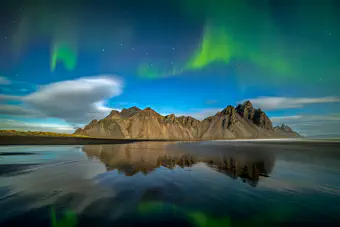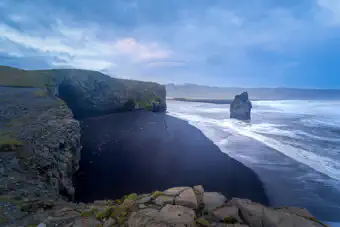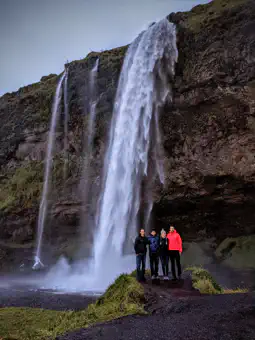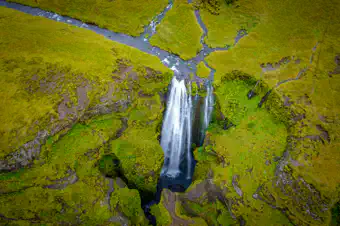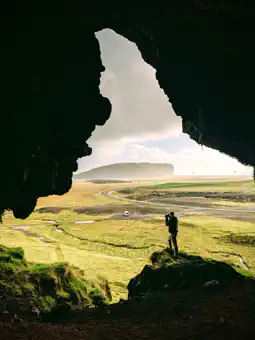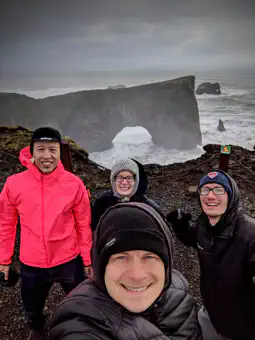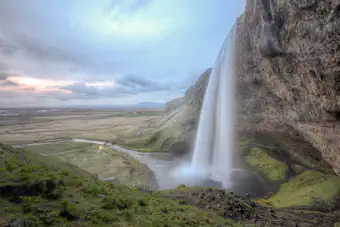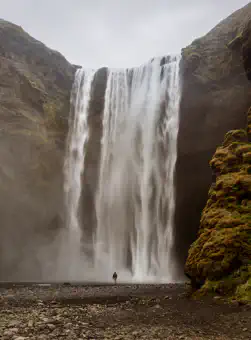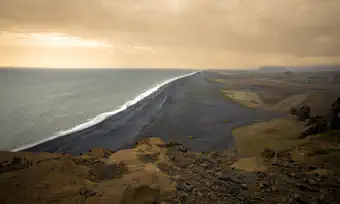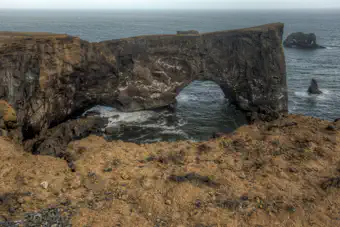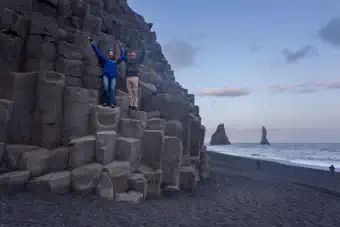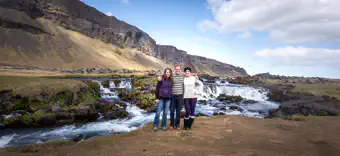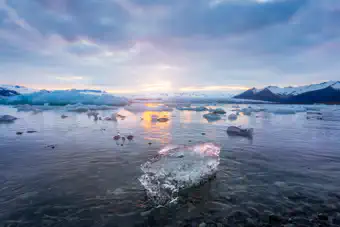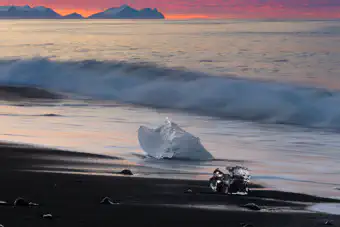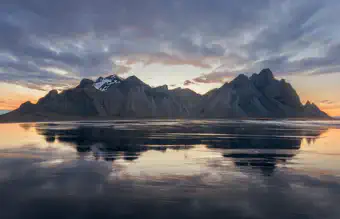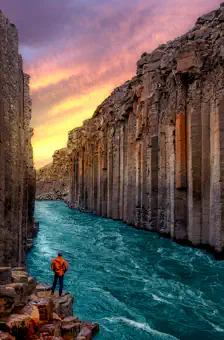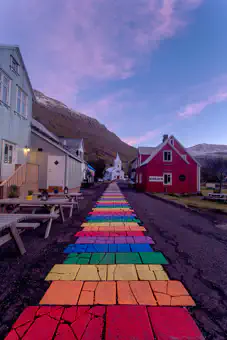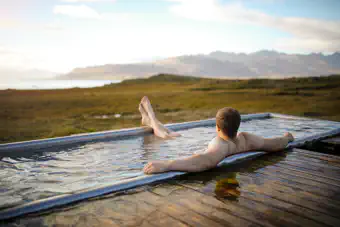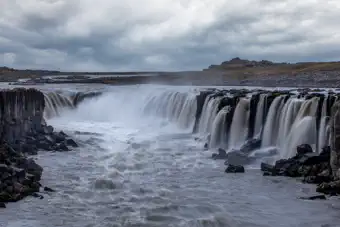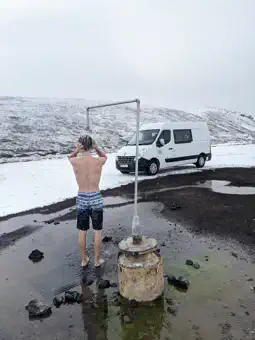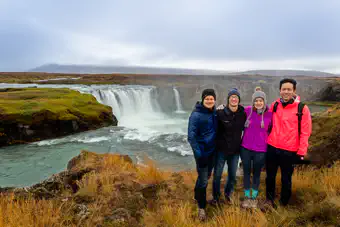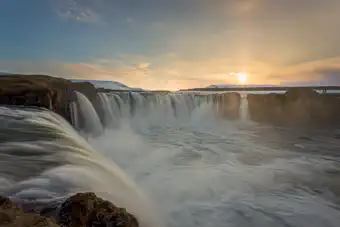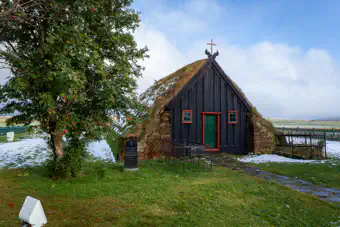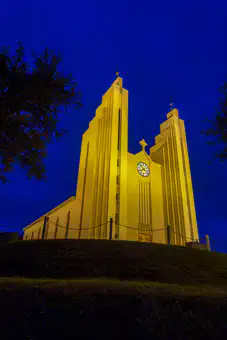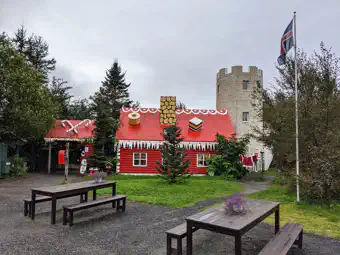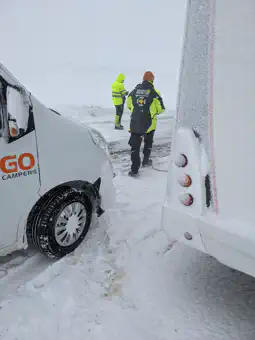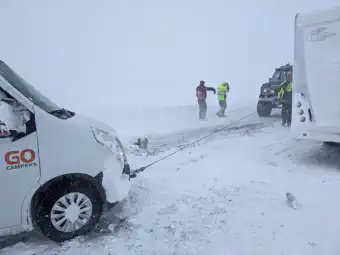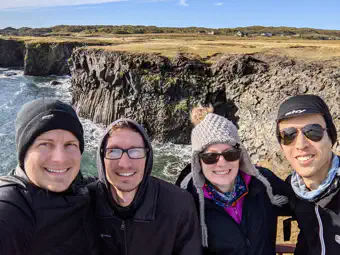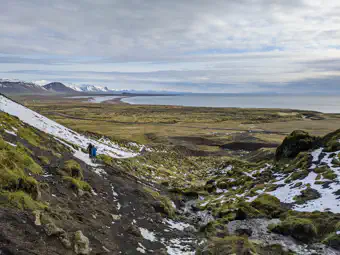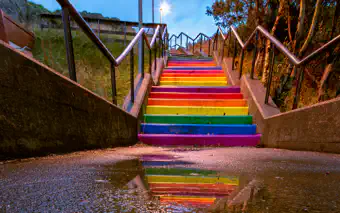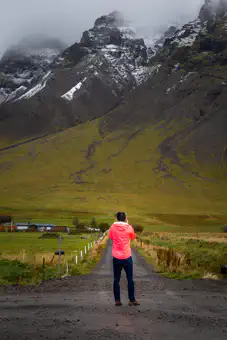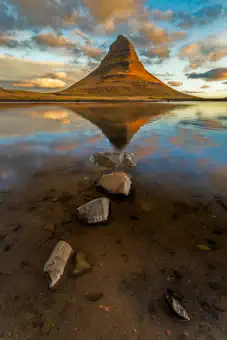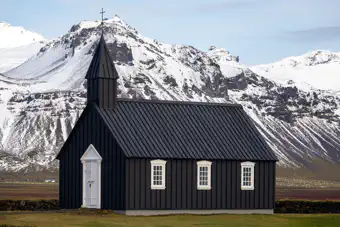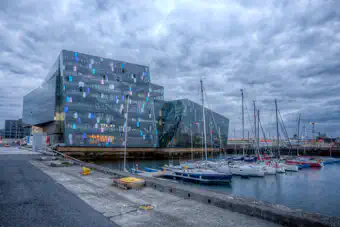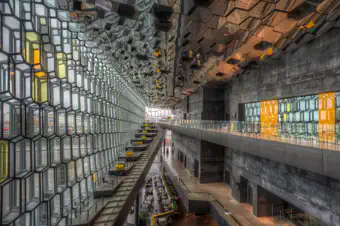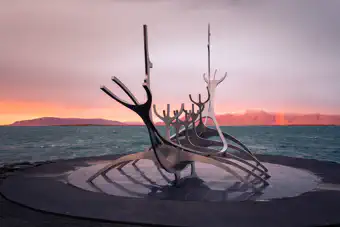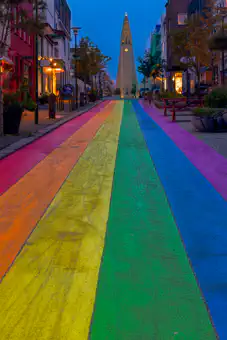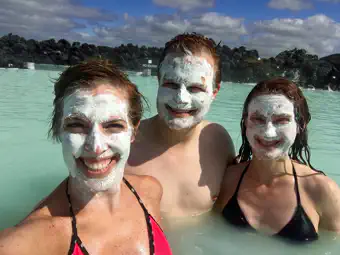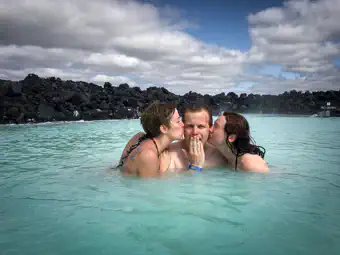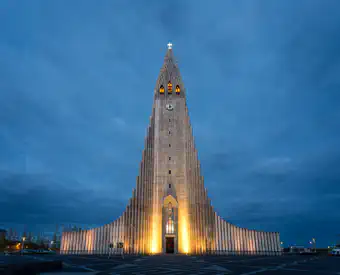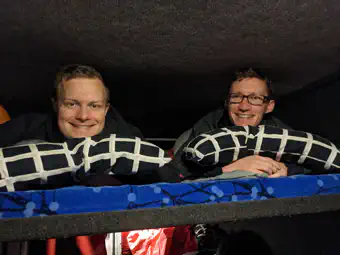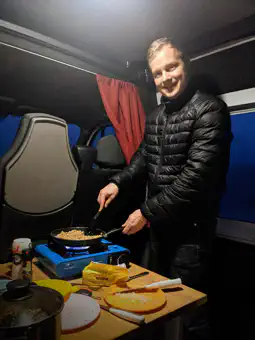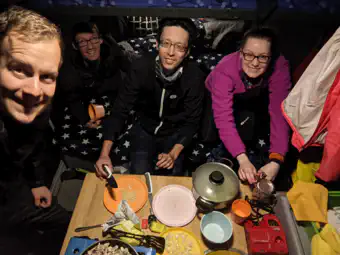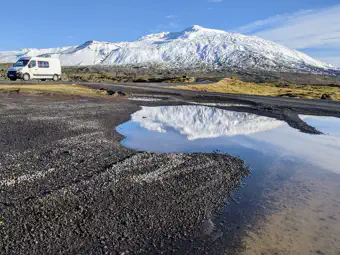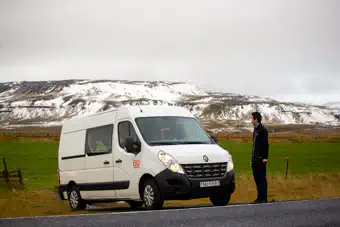The Most Beautiful Country in the World
Iceland is incredible. It’s unlike anywhere else I’ve ever visited, and it was so nice I had to visit it twice. So far. I would love to go back to experience more. I first visited in May of 2016 with two friends and then took my siblings back in the fall of 2021, so my recommendations will be most useful for visits during the shoulder season. If you go in the middle of the summer, you can experience the Midnight Sun and potentially the remote Highlands. If you go in the winter, you can experience ice caves.
I recommend a trip length of at least 10 days because that’s enough time to drive around the entire Ring Road (Route 1) which conveniently circumnavigates the country and is adjacent to many of Iceland’s top sights. If you go for less, you’ll have to skip some things and will have a higher driving-to-sights ratio. It’s 828 miles long and would take 17 hours of continuous driving to complete it, so 10 days is 1-2 hours of driving per day.
You can travel in any direction, but if you go counter-clockwise, you’ll progressively see fewer tourists since the south coast of the island seems to be the most popular. If you have less than 10 days, I’d recommend hitting the south and going to at least Jökulsárlón because the glacier lagoon and Diamond Beach are stunning. If you have time to venture a little further, my favorite place in Iceland is Vestrahorn. If I could only pick one place in the world to photograph, that mountain range would be it. The black sand beach combined with constantly changing tides provides so many interesting compositions.
The Southern Coast
Foss is the Icelandic word for waterfall, and you’re going to see a ton of them, so anytime something ends in ‘foss’ be prepared to get wet!
Seljalandsfoss is unique because it’s possible to walk completely behind the waterfall. The cliff it comes over is slowly eroding, so hopefully, it doesn’t fall while you’re underneath it. Just be prepared to get wet. And protect your camera equipment because the mist from the fall will soak everything quickly. I recommend taking a towel to wipe things off. Nearby is another hidden waterfall that you may or may not have to wade into waist-deep in order to reach the little alcove. Or you can send a drone up to peer inside the cavern!
Skógafoss will give you a rainbow if it happens to be sunny. You can get up close to it at the bottom and there’s also a workout of a staircase to take you up to a viewing platform at the top.
There’s an abandoned plane wreck that has turned into a famous tourist attraction. It’s a bit of a hike, but it can be a great place for beautiful weather conditions including aurora!
Near the town of Vik is Dyrhólaey also known as “The Arch with the Hole”. By now, you should have gotten used to your stick-shift vehicle, so you can take the steep and narrow climb up to the top which gives you a beautiful and sometimes windy view of the surrounding area. Hold onto those doors as you open them, so they don’t break off!
Reynisfjara is also known for its black sand beach and it also has sea stacks and unique (and photographic) geological conditions.
Top up on snacks, food, water, and gas in Vik since it will be a while until the next big town.
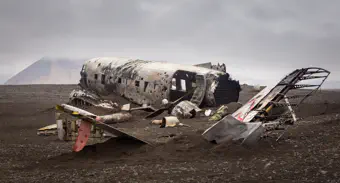
The Eastern Coast
Vatnajökull National Park is massive and is one of Iceland’s three national parks. It covers 14% of Iceland, so you’ll only scratch the surface. We took the popular short hike to see Svartifoss which is a waterfall framed by black columnar basalt formations.
Fjallsárlón is a melting glacier that’s easy to see, but it’s shown up by the nearby Jökulsárlón Glacier Lagoon and the Diamond Beaches on both sides. You’ll see ice calving and then slowly make its way out to the nearby ocean. You may also glimpse seals playing around in the lagoon. The tides pull ice chunks out of the lagoon and then leave them stranded and melting on the black sand beach. This is a great place to do some long exposures as the sun sets or rises. You have to time it right so that low tide occurs at the same time.
The town of Höfn has both a supermarket and a very nice outdoor geothermal pool. If you’re camping that also doubles as a “free” shower when you pay to use the facilities. There’s also a town campsite there that we stayed at for about 2 hours until we spotted the northern lights dancing, so we high-tailed it to the nearby Stokksnes Peninsula to watch Lady Aurora dance above the beautiful Vestrahorn Mountain.
When the tide goes out, the entire black sand beach acts as a mirror and creates beautiful reflections. Just keep an eye on the tide, because it’s easy to get wet feet at best or wet camera equipment at worst!
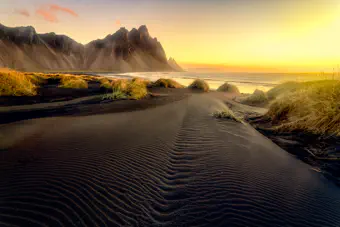
Most towns have hot springs of some sort, but there’s one in particular that has the best views known as Djúpavogskörin. It’s out in the middle of nowhere, but “nowhere” overlooks a grand vista. The water is HOT and there aren’t any changing facilities, but I had to try it!
Egilsstaðir is the next “big town”. Our side trips from there included a 3-mile out-and-back hike to see the Litlanesfoss Waterfall which has striated red rock deposits as well as an overnight in Seydisfjordur. This town is quite quaint. Its population is just 668 people, but it serves as a ferry connection point to Scandinavia. It also has an Instagramable rainbow road leading up to the Blue Church. The road to Seydisfjordur is through a high mountain pass which was burdened with snow and fog when we passed. But the next morning I got lucky because the fog burned off and I had pink clouds for sunrise!
We continued on to one of my sister’s “must-sees” Stuðlagil Canyon. If you follow Google Maps you’ll get to a very cool overlook as well as solid metal stairs that take you down towards the river. But then you’ll see people on the other side and wonder how to get there. You’ll need to backtrack and cross the river. “Parkplatz Klaustrusel - Stuðlagil” should get you there. These basalt columns are also Insta-famous. But be warned that to get the clear teal water you must visit during spring. Later in the year melted glacier water turns it a milky brown.
The North
Dettifoss and Selfoss are both massive waterfalls. Dettifoss is the second most powerful waterfall in Europe after the Rhine Falls. And Selfoss isn’t so much one waterfall as it is 30 small ones all cascading upstream of Dettifoss. The first time you see it you’ll wonder if you’re living in a fairy tale! ✨🧚🏼✨ But you have an important decision to make: do you visit the east side or the west side? You might think that “both” is the right answer, but that’s like basically like saying you’re going to visit both the North and South Rim of the Grand Canyon. They’re separated by hours. Visiting the west side is the easiest because it’s a nice paved road and there are facilities upon arrival. But the east side offers sunset views and is the only way to really see and appreciate Selfoss.
From there, you’ll head to the Lake Mývatn region which reminded me a lot of Yellowstone with all its geothermal activity and rotten-egg smells. But if the smells get to you, there is a nearby Perpetual Shower near the geothermal plant that is connected to a hot spring and flows 24/7/365.
And then onwards to another of my favorites: Goðafoss! The Waterfall of the Gods was named because purportedly they threw all of the idols of the old Norse gods into the waterfall to symbolize Iceland’s switch to make Christianity the official religion. I think sunset is the best time, but there are compositions for sunrise too. And Northern Lights, although I have yet to catch them there, but it’s a goal!
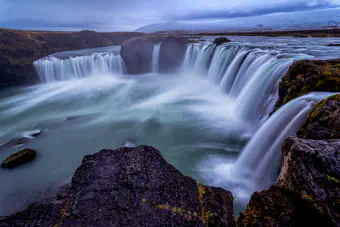
Akureyri is the second-largest city in Iceland and is nicknamed the Capital of the North. I recommend the Kaffi Ilmur for their breakfast buffet because it includes their tasty cakes! We also enjoyed the impressive Akureyri Swimming Pools and the Akureyri Botanical Garden. And if you love Christmas, the Akureyri Christmas House is a trip! They had a hot cocoa bar when we went.
The Western Coast - The Snæfellsnes Peninsula
We had unusually poor weather for most of our second trip; it was windy for the first few days and then it rained for a few days. But the worst of it was when we were headed back from the North and had to cross a mountain pass that continuously got worse. The roads were too narrow for us to turn around and we eventually ended up in a freak blizzard with white-out conditions. And our massive van with its tiny tires and 2-wheel drive could barely get enough traction to keep moving forward. So as soon as we saw a turn-off with an RV already parked, we pulled off and parked. We had a half-tank of gas, plenty of food, and a heater along with sleeping bags rated for sub-zero temperatures, so we were planning to just stay put until conditions improved. But after making lunch and playing some cards we were surprised when someone knocked on the door. We opened it up and this lady jumped inside with her heavy parka emblazoned with “Search and Rescue”. She told us she was here to get us down from the mountain. We were surprised and explained we were planning on just waiting it out. Realizing we weren’t quite as helpless as expected, she said that there were a few other slide-offs further back, so they would go and get those people and then stop on the way back to either pull us out or leave our van and take us down.
About an hour later, a massive snow plow and a beefy van with huge snow tires arrived. The snow plow had to make close passes to get as much snow removed because the new accumulation had packed us in tight. We helped dig our tires out and figured out why all rentals have the cable to screw in upfront. After a few false starts, we were free! There were a couple of other vehicles in our caravan down the mountain and Heath had to drive about 30 mph all the way down as the snowplow cleared a fresh path for us, but we did get safely down. That trip should have taken us about 30 minutes and instead it took us 3 hours!
But our day in the Snæfellsnes had the best weather of our trip. It was sunny which meant we were able to fit in a lot of mini-hikes and exploring. Even if you don’t do the Ring Road, the Peninsula is close enough to Reykjavík for a day trip.
Kirkjufellsfoss is stunning in almost all conditions: sunrise, sunset, northern lights, winter, summer, etc. If you’re a photographer, plan to spend at least a couple of hours. There’s also a nice pond/lake downriver that the waterfall drains into which produces some stunning reflections.
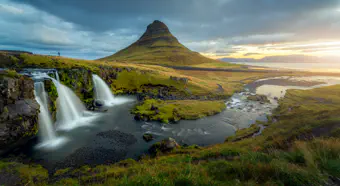
Other highlights include:
- Saxholar Crater (a dormant volcano with easy metals stairs up to the top)
- Djúpalónssandur Black Beach (a nice hike down to a shipwreck with the smoothest black stones you’ll ever see)
- Lóndrangar (impressive sea stacks)
- Arnarstapi Village (more sea stacks)
- Rauðfeldsgjá Gorge (a slot canyon!)
- Búðakirkja Black Church
Reykjavík
I recommend the Capitol City be at the end of your trip unless you’re an aspiring “Influencer” and need to purchase your several-hundred-dollar traditional Icelandic sweater known as lopapeysa, so you can pose in all of your travel pics. Even though I love sweaters, I have yet to purchase one. First, they are toasty warm, so you’ll only wear them in the coldest weather. Second, they’re itchy. On my first trip, one of my friends bought one from the recommended shop downtown The Handknitting Association of Iceland. When I asked her how many times she had worn it a year later she still hadn’t worn it.
You’ll see the stunning architecture of Hallgrimskirkja rise above everything else when walking around the city. Since it’s a church, you’re allowed to wander inside. If you make your way down Skólavörðustígur Street you’ll see a large section has been painted with pride colors which make for incredible leading lines looking back at the church. I love blue hour shoots with vibrant colors myself.
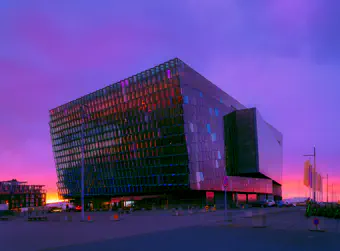
I loved wandering inside and around the Harpa Concert Hall. It opened in 2011 and is beautiful from both the inside and outside. It has a bunch of geometric windows with interesting patterns and the glass seemingly changes color as you change your perspective. There’s also a nice pool out front that can make for some nice reflections if you happen to visit on a day without wind.
The Sun Voyager is a dreamboat sculpture that sits right on the ocean looking north, so it can work as a sunrise, sunset, or aurora photo shoot spot.
There are several geothermal pools in the city, but we enjoyed the Laugardalslaug.
And if you’re feeling adventurous, The Icelandic Phallological Museum is…one-of-a-kind. I thought long and hard about whether I wanted to visit and decided I had to. Because I was traveling with two classy women on my first trip, I was a gentleman and waited until after they flew out to buy my ticket. My guidebook talked it up to be some big thing, so I was disappointed it ended up smaller than expected. But by a stroke of luck, they’ve since moved to a new, larger space. I know with some museums you just want to get in and out quickly, but this one is best if you take your time to really enjoy it and let everything soak in. While it may rub some people the wrong way, I think it’s worth your time. Just a tip. Ok, sorry about all the puns; this has gotten out of hand. The new location now offers food and drink at The Phallic Café Bistro, no joke. YMMV.
The Golden Circle is another popular day trip, but after everything we had already seen I thought it was a bit of a letdown. You could do this first, and it would probably be quite impressive before you see any of the remote gems.
And the infamous Blue Lagoon. I did this once. It was much too expensive for geothermal plant “waste” water, but I’m glad I had the experience, so you’ll probably want to spend the money too. Just know what you’re getting.
Accommodations
On both trips, I rented a camper van because they provide the ultimate flexibility. Weather conditions change fast and can be brutal as you’ll learn! Being able to tweak your itinerary on-the-fly is helpful, and as a photographer, I really enjoy being able to camp close to where I want to shoot in the morning. Dispersed camping isn’t as popular as it used to be because people weren’t respecting the land, but it can be done in a pinch. We ran into several instances of severe weather and being able to pull off the road and make lunch is a nice option. Food is also expensive, so being able to make eggs yourself helps save some money. I’ve used both Go Campers and KuKu Campers. Prices seem to fluctuate, so I’d recommend searching around.
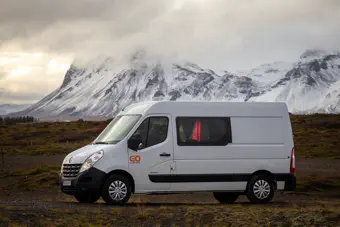
The Map
I didn’t create the original version of this, but I no longer have the link to the original author. But I found it useful, and I modified it for my own purposes including putting in photos of some of my favorite places. Most of the descriptions and ratings are not mine, but I tend to agree with the original author. I hope it’s helpful for you as you’re constructing your trip!
